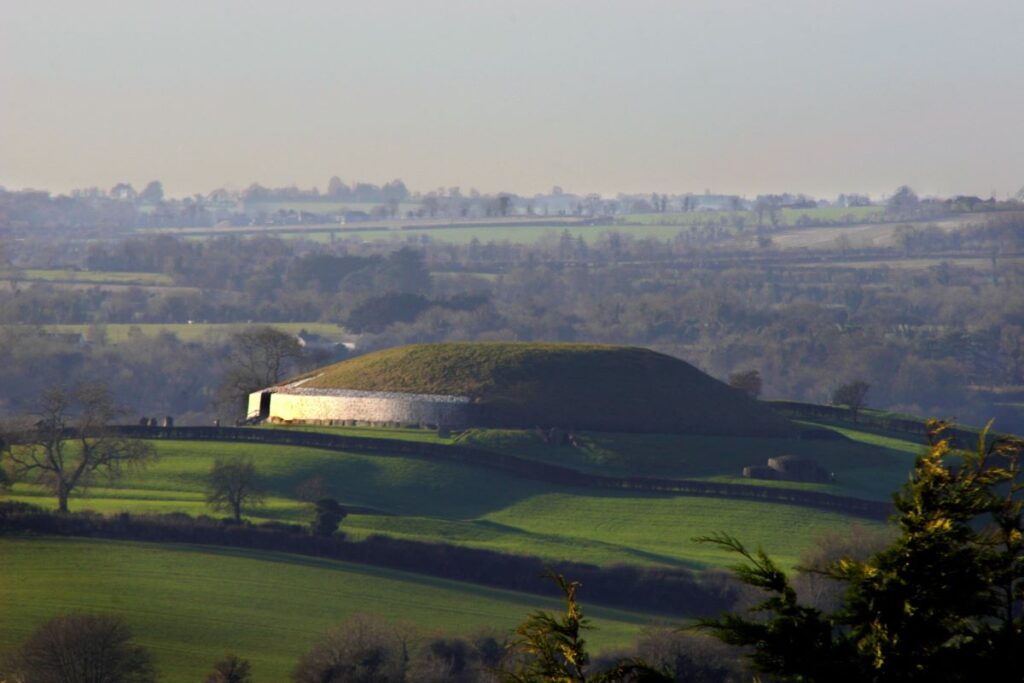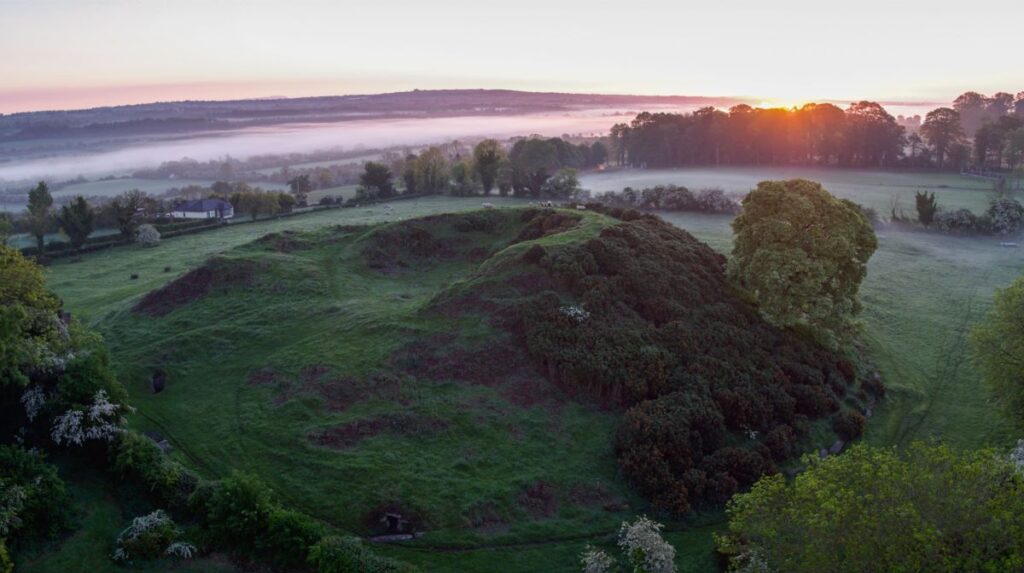Part of the UNESCO World Heritage Site in the Boyne Valley in County Meath is to become Ireland’s seventh National Park.
The new National Park in Ireland’s Ancient East will stretch over 550 acres (223 hectares) and will be a unique place where history, heritage, nature and culture collide.
The park will be situated in the eighteenth-century Dowth demesne, which overlays a prehistoric landscape of global importance. It is the location of significant archaeological remains including a Neolithic passage tomb, the Late Neolithic Dowth henge, two smaller passage tombs, early medieval ringforts and a Bronze Age field system.

The demesne also includes Dowth Hall, a refurbished late Victorian almshouse, extensive woodlands and wetlands and a demonstration farm extensively researched for sustainable agricultural practices.
While currently in poor repair, Dowth Hall – an eighteenth-century neoclassical country house – retains many original features including rococo stuccowork plaster, marble fireplaces, wooden panelling and large gilded mirrors.


Dowth demesne also has an abundance of flora and fauna. It borders the northern banks of the Boyne river, a designated Special Area of Conservation under the Habitats Directive and a Special Protection Area under the Bird Directive.
A recent biodiversity survey reported 54 species of birds, five of which are of high conservation concern, including a breeding population of native grey partridge. Eleven species of butterflies and eight species of bats were also identified alongside a significant population of red deer. Woodpeckers, kingfishers, barn owls and hobbies have also been seen on the land.


A masterplan for development of the park will be created to ensure that the built and natural heritage of the area, which has over 5,000 years of recorded history, will be protected and a range of possibilities for education and recreation explored.
The property will become Ireland’s seventh National Park, joining the Wicklow Mountains National Park as the second in the east of the country.


The UNESCO World Heritage Site of Brú na Bóinne, which incorporates the Dowth demesne, is home to the largest collection of megalithic art in Europe, dotted across over 90 Neolithic monuments. Of these, the best known is Newgrange, a large and impressive portal tomb that is older than the pyramids.
Newgrange is famously aligned with the stars and at the winter solstice (December 21) a shaft of light enters the monument through a perfectly placed opening at the passage entrance creating a golden path all the way to the burial chamber at its heart.
C/O www.ireland.com

































